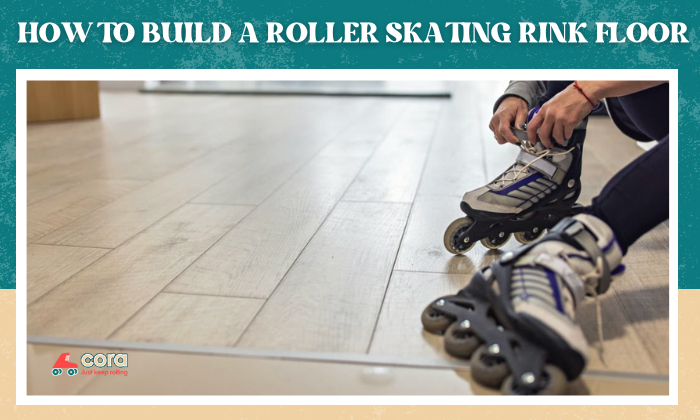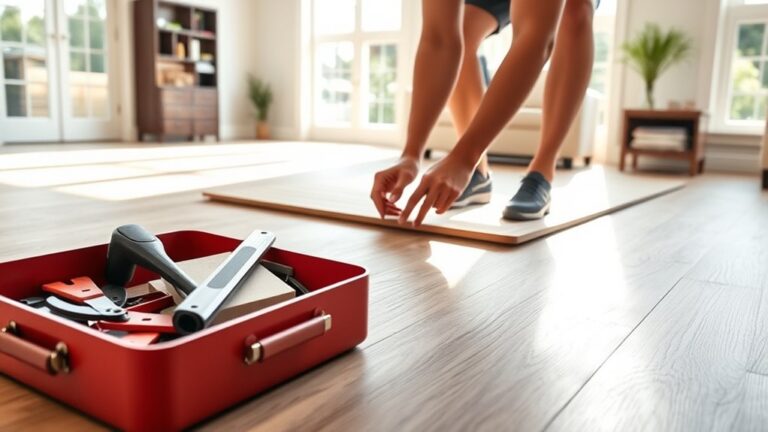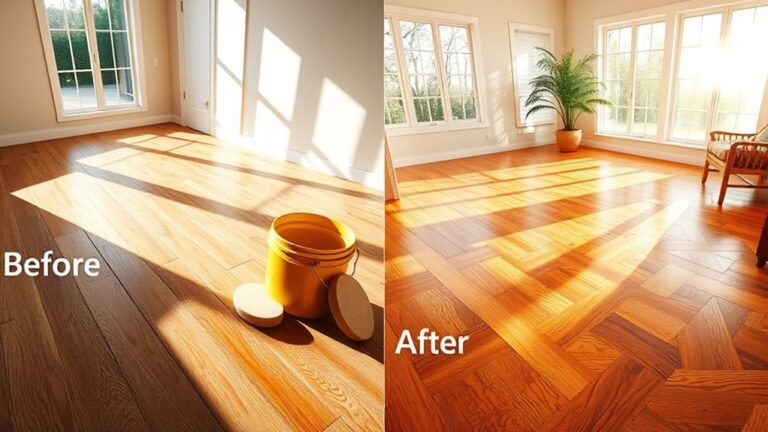To build a roller skating rink floor, you need to start with a solid and level concrete surface. Then, apply multiple layers of a specialized skate floor coating, followed by a final layer of polyurethane for a smooth and durable finish.
Welcome to the world of roller skating! If you’re looking to create your own roller skating rink, one essential component you’ll need to consider is the floor. The roller skating rink floor plays a crucial role in ensuring a smooth and enjoyable skating experience for both beginners and advanced skaters alike.
We’ll guide you through the process of building a roller skating rink floor, from preparing the base to applying the final coating. By following these steps, you’ll be well on your way to creating a fantastic roller skating venue that will have people lacing up their skates in no time. So, let’s get rolling!
Roller Skating Rink Floor: Key Elements To Consider
Roller Skating Rink Floor: Key Elements to Consider
When building a roller skating rink floor, it is crucial to carefully select the right materials and consider various design factors that will enhance the skating experience while ensuring durability and safety.
Understanding The Importance Of Selecting The Right Materials
Selecting the appropriate materials for the roller skating rink floor is essential for its longevity and performance. The flooring should be able to withstand the constant pressure exerted by skates and provide sufficient grip to prevent accidents. Durable materials such as hardwood, reinforced concrete, or specialized roller sports flooring are commonly used to ensure longevity and reduce maintenance efforts.
Examining The Design Factors That Affect The Skating Experience
The design of the roller skating rink floor plays a vital role in providing an enjoyable and safe experience for skaters of all skill levels. Factors such as surface smoothness, flatness, and shock-absorbing capabilities contribute to reducing falls and injuries. Additionally, considering the dimensions and shape of the rink, along with proper lighting and ventilation, can greatly enhance the overall skating experience.
Choosing The Right Materials
When it comes to building a roller skating rink floor, choosing the right materials is essential. There are several flooring options available, each with its own pros and cons. Evaluating these options is crucial to ensure the longevity and performance of the rink floor.
| Material | Pros | Cons |
|---|---|---|
| Hardwood | Durable and long-lasting | Expensive and requires regular maintenance |
| Roller Performance Flooring | Offers excellent grip and speed | May require frequent resurfacing |
| Concrete | Cost-effective and easy to maintain | Not as smooth as other options |
| Rubber | Shock absorbent and reduces noise | Can be costly and may need replacement over time |
When choosing a material for the roller skating rink floor, durability and ease of maintenance are crucial factors to consider. Hardwood flooring is known for its durability, but it can be expensive and requires regular maintenance. Roller performance flooring offers excellent grip and speed, but may need frequent resurfacing. Concrete is cost-effective and easy to maintain, though it may not be as smooth as other options. Rubber flooring is shock absorbent and reduces noise, but it can be costly and require replacement over time.
Flooring Preparation And Installation Process
The flooring preparation and installation process is crucial when building a roller skating rink floor. Before installing the floor, it is important to understand and follow necessary steps for floor preparation. This includes examining the role of moisture barrier and insulation. Moisture barrier protects the floor from moisture damage and helps maintain its longevity. Insulation, on the other hand, helps in providing a comfortable skating experience while also reducing heating and cooling costs. It is equally important to ensure proper subfloor installation. A well-installed subfloor provides stability, support, and durability to the skating rink floor. It acts as a solid foundation for the flooring material and helps minimize the risk of damages and difficulties in future maintenance. Therefore, paying attention to these factors during the flooring preparation and installation process is imperative for constructing a high-quality roller skating rink floor.

Design Considerations For An Optimized Skating Experience
Designing a roller skating rink floor involves several considerations to provide an optimized skating experience. One crucial factor is the ideal dimensions for different types of skating activities. For speed skating, long straightaways are necessary, while dance skating benefits from more circular spaces. A smooth and level surface is of utmost importance to prevent accidents and ensure a pleasant skating experience. Proper lighting is essential as it not only illuminates the area but also enhances the overall ambiance. Additionally, acoustics play a significant role in creating an enjoyable environment, minimizing echoes, and ensuring clear communication between skaters. By carefully considering these various design elements, a roller skating rink floor can be created to cater to different types of activities and provide an optimal skating experience for all.
Maintenance And Upkeep Of Roller Skating Rink Floors
Regular cleaning and maintenance of roller skating rink floors is crucial to ensure a safe and enjoyable experience for skaters. Routine cleaning involves sweeping or vacuuming the floor to remove dirt, dust, and debris. Periodic deep cleaning may be necessary to eliminate stubborn stains and marks, which can be accomplished through mopping or using specialized floor cleaning machines.
To prevent wear and tear, it is important to conduct regular inspections and promptly address any issues. Identifying and repairing minor damages, such as cracks or chips in the flooring, helps maintain the integrity of the rink floor and prevents accidents. If left unaddressed, these minor damages can worsen and lead to costly repairs in the future.
Over time, roller skating rink floors may require refurbishment or renovation. This can involve sanding and refinishing the floor surface or even installing a new floor altogether. It is important to explore various options and consult with experts to determine the most suitable solution based on the condition and requirements of your rink.
Safety Measures For Roller Skating Rink Floors
Ensuring the safety of roller skating rink floors is of utmost importance to protect skaters from accidents and injuries. Safety standards and regulations must be considered to create a safe environment for all users. One key aspect is proper signage and markings. Bold and clear signs indicating areas of caution, skate at your own risk, and speed limits help skaters navigate the rink and be aware of potential hazards. Additionally, high-visibility markings on the floor guide skaters and prevent collisions.
Moreover, implementing additional safety measures such as barriers and padding can greatly reduce the risk of injuries. Barriers around the perimeter of the rink prevent skaters from accidentally veering off the designated area, ensuring their safety and the safety of others. Padding on the walls and surrounding obstacles cushions falls and minimizes the impact, reducing the chance of severe injuries.
| Importance of Proper Signage and Markings | Exploring Additional Safety Measures |
|---|---|
| ● Indicate areas of caution | ● Barriers around the perimeter |
| ● Inform skaters to skate at their own risk | ● Padding on walls and surrounding obstacles |
| ● Highlight speed limits | |
| ● Facilitate easy navigation and avoid collisions |
Longevity And Cost Considerations
Longevity and Cost Considerations
Analyzing the lifespan of different flooring materials:
Vinyl flooring is a popular choice due to its durability and low cost. With proper maintenance, it can last for more than 15 years, making it a cost-effective option. However, it may require periodic refinishing to maintain its appearance.
Hardwood floors offer a timeless look and can last for decades. Although the upfront costs may be higher, their longevity makes them a worthwhile investment. Regular sanding and refinishing can help extend their lifespan even further.
Epoxy flooring is known for its strength and resistance to wear and tear. It can have a lifespan of up to 20 years or more with proper care. However, it may require occasional touch-ups to maintain its smooth finish.
Concrete floors are highly durable and can withstand heavy foot traffic. When properly sealed and maintained, concrete floors can last for several decades without major issues.
Considering the initial costs and long-term cost-effectiveness, each flooring material has its pros and cons. Regular maintenance, including cleaning and refinishing, plays a crucial role in extending the floor’s lifespan regardless of the chosen material.
Case Studies: Successful Roller Skating Rink Floors
Building a successful roller skating rink floor requires careful planning, design, and maintenance. To understand what makes a roller skating rink floor successful, it is essential to analyze case studies of well-designed and well-maintained floors. These case studies provide valuable insights and practical lessons that can be applied to any roller skating rink project. Factors such as the choice of materials, surface smoothness and grip, lighting, and maintenance play a crucial role in the success of a floor. For example, a durable and shock-absorbent floor material is needed to withstand the constant wear and tear from skates. Proper lighting enhances visibility and safety, while regular cleaning and maintenance ensure a clean and enjoyable experience for skaters. By studying these case studies, we can gain a better understanding of the principles and best practices required to build a roller skating rink floor that delights skaters and stands the test of time.
Frequently Asked Questions Of How To Build A Roller Skating Rink Floor
What Is The Best Flooring For A Skating Rink?
The best flooring for a skating rink is typically made of a hard, smooth surface such as concrete or wood. These materials provide excellent durability and traction for skaters. Additionally, they can be easily maintained and are resistant to wear and tear.
How Profitable Is A Roller Skating Rink?
A roller skating rink can be profitable, but it depends on various factors like location, operating costs, and customer demand. With proper management and marketing strategies, a well-run rink can generate a steady income.
Can You Roller Skate On Linoleum?
Yes, you can roller skate on linoleum. Linoleum provides a smooth surface ideal for roller skating. Just make sure the linoleum is in good condition and free from any obstructions to ensure a safe and enjoyable skating experience.
What Is A Smooth Enclosed Floor For Roller Skating Called?
A smooth enclosed floor for roller skating is known as a roller skating rink. Such rinks provide a safe and controlled environment for skaters to enjoy their sport.
Conclusion
Building a roller skating rink floor requires careful planning, proper materials, and expertise. By following the steps mentioned in this blog post, you can create a sturdy and safe floor that ensures an enjoyable skating experience for all users. Remember to prioritize safety, durability, and maintenance when constructing the floor.
Happy skating!




